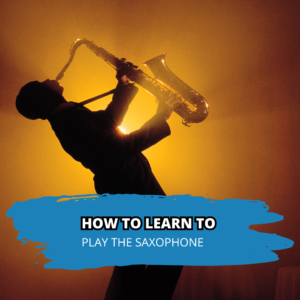How to learn to play the saxophone

If you want to learn how to play the saxophone, you’re in for a treat! The saxophone is a fun and versatile instrument that can be used in a variety of genres. While it may seem daunting at first, with a little practice you’ll be playing like a pro in no time.
One of the best ways to learn how to play the saxophone is to take lessons from a qualified teacher. They can help you get started on the basics and introduce you to different method books. However, even if you don’t take lessons, there are plenty of resources available online and in print that can help you teach yourself.
The most important thing when learning to play the saxophone is to practice, practice, practice! Even if you only have a few minutes each day, regular practice will help you improve your skills and become a better player. So dust off that saxophone and get started on your musical journey!
Developing a Practice Routine
To make the most out of your practice sessions, it’s essential to have a structured routine. Begin with warm-up exercises, like long tones and scales, to improve your tone and technique. Then, focus on a specific piece or passage you want to master. Finally, end your practice with something you enjoy playing to keep the sessions fun and motivating. Remember, consistency is key. Short, daily practices are more effective than sporadic, lengthy sessions.
Understanding the Saxophone
Get familiar with the anatomy of the saxophone – the reed, mouthpiece, keys, and how they all work together. Understanding your instrument will make it easier to troubleshoot any issues and enhance your playing technique. Additionally, learning how to properly clean and maintain your saxophone will ensure it stays in good condition and produces the best sound.
Listening and Analyzing
One of the best ways to improve is by listening to accomplished saxophonists. Pay attention to their technique, the way they phrase melodies, and how they express emotion through their playing. Try to listen to a wide range of styles and genres to broaden your musical understanding and find your unique voice.
Playing with Others
When you’re comfortable with your basic skills, seek out opportunities to play with other musicians. Joining a band or ensemble can be incredibly rewarding. It helps you develop your ability to play in sync with others, improves your timing, and exposes you to different styles of music and playing techniques.
Setting Goals and Overcoming Challenges
Set short-term and long-term goals for your saxophone journey. Whether it’s mastering a particular piece, improving your improvisation skills, or performing in front of an audience, having clear goals will keep you motivated. You’ll inevitably face challenges, but remember that each one is an opportunity to grow. Don’t hesitate to seek guidance from teachers or more experienced players when you hit a roadblock.
Embracing the Musical Journey
Lastly, remember that learning an instrument is a journey, not a destination. There will always be something new to learn or an area to improve. The key is to enjoy each step of the process and celebrate your progress. Your dedication and hard work will not only enhance your saxophone skills but also enrich your life with the joy of music.
FAQs
1. Can I teach myself the saxophone?
You could technically teach yourself the saxophone, but it would be very difficult to do so without any prior knowledge of playing musical instruments. It is highly recommended that you take some form of music lessons, whether that be from a personal teacher or online lessons, in order to learn the basics. Even if you are a fast learner, you will still need to put in a lot of practice in order to improve.
2. Is it hard to learn to play the saxophone?
I think that anything worth learning takes effort, so yes, it will take some practice to learn to play the saxophone well. However, I don’t think it would be impossible to learn on your own, given enough time. I would recommend taking some lessons, though, to help you get started more quickly.
3. How many hours a day should I practice saxophone?
Most students who are taking saxophone lessons should practice for at least 30 minutes a day. If you practice for longer periods of time, you will make faster progress. However, it is more important to be consistent and practice every day rather than practice for longer periods of time on some days and not at all on others.
4. What are some recommended method books for beginners learning the saxophone?
For beginners, popular method books include “Essential Elements for Band – Saxophone Book 1” by Hal Leonard, “Rubank Elementary Method – Saxophone” by H. Voxman, and “The Saxophonist’s Workbook” by Larry Teal. These books provide comprehensive guides to the basics of saxophone playing.
5. Are there any breathing exercises that can help improve my saxophone playing?
Yes, breathing exercises such as diaphragmatic breathing can significantly improve breath control and support. Techniques like the ‘Breath of Fire’ or simple yoga breathing exercises can also be beneficial.
6.What are some common challenges beginners face when learning the saxophone and how can they be overcome?
Common challenges include difficulty with breath control, finger positioning, and producing a consistent tone. These can be overcome with regular practice, focusing on proper technique, and seeking feedback from teachers or experienced players.
7. What are the differences between the alto, tenor, and soprano saxophones, and how do I choose which one to learn?
The main differences lie in size, pitch, and sound. The alto is smaller and higher-pitched than the tenor and is often recommended for beginners. The tenor is larger with a deeper sound, and the soprano is the highest-pitched of the three. Your choice might depend on your musical preferences or physical comfort with the instrument.


